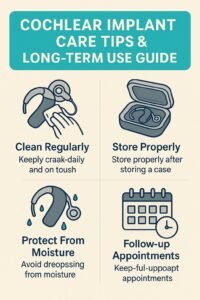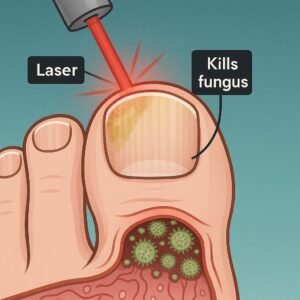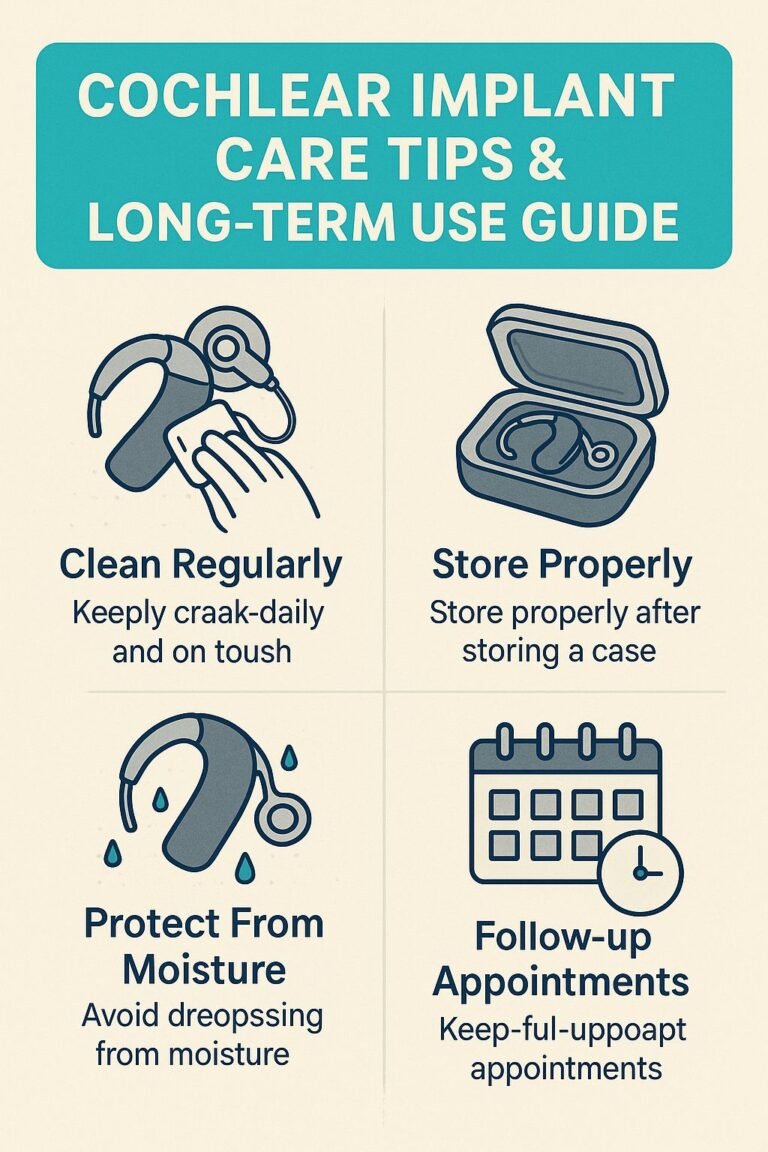Summary
- Tea tree oil is a natural remedy that can be as effective as clotrimazole, a common antifungal medication.
- Baking soda can help stop the growth of fungus and can be applied directly to the toenail.
- Oral antifungal medications can be effective, but it may take several months before you see results.
- Laser treatments are a non-invasive option, but they can be expensive.
- Keeping your feet clean and dry is important for preventing toenail fungus.
Understanding the Best Toenail Fungus Treatments & Remedies
Having toenail fungus can be a real pain, but knowing about the best treatments and remedies can help make it easier to deal with. Whether you’re interested in natural treatments or thinking about getting medical treatment, it’s important to know what works best. Let’s explore the world of toenail fungus treatments and find the best option for you.
Best Remedies for Immediate Relief
For immediate relief, it’s important to select treatments that not only alleviate the symptoms but also get to the heart of the problem. Here are some of the best remedies that provide immediate relief:
- Tea Tree Oil: This natural remedy has been a staple in treating fungal infections. Its antifungal properties make it effective in reducing symptoms and clearing up infections.
- Over-the-Counter Antifungal Creams: These are readily available and can be applied directly to the affected area. Look for creams containing clotrimazole or miconazole for best results.
- Oral Antifungal Medications: These are often prescribed by doctors for severe cases. They work from the inside out, attacking the fungus at its source.
- Laser Treatments: This modern approach uses laser technology to target and kill the fungus without damaging the surrounding tissue.
Choosing the right treatment often depends on the severity of the infection and personal preference. However, most importantly, consistency in application is key to achieving the desired results.
What Affects the Success of a Toenail Fungus Treatment?
There are a number of factors that can impact the success of a toenail fungus treatment. Knowing what these are can help you to pick the right treatment for you:
- Severity of the Infection: Mild infections may respond well to home remedies, while severe cases might require prescription medications.
- Consistency of Use: Regular application of treatments is crucial. Skipping doses can prolong the infection.
- Underlying Health Conditions: Conditions like diabetes can affect how well treatments work and may require specialized care.
- Type of Fungus: Different fungi may respond differently to treatments. Identifying the specific type can help tailor the treatment.
Causes and Symptoms of Toenail Fungus
Understanding the causes and symptoms of toenail fungus is the first step in effectively treating and preventing it. Let’s explore what leads to this condition and how you can recognize it early.
What Causes It?
Toenail fungus, also known as onychomycosis, is usually the result of dermatophyte fungi. These fungi love warm, moist places, which makes them common in locker rooms and swimming pools. For more information on effective treatments, check out this toenail fungus treatment guide. Other causes include:
- Donning shoes that are too tight and cause your feet to sweat.
- Going shoeless in public places.
- Previous incidents of athlete’s foot.
- Living with a weakened immune system.
Given these conditions, practicing proper foot hygiene and choosing shoes that allow your feet to breathe can help lower your chances of getting toenail fungus.
Identifying Signs
Identifying the signs of toenail fungus early can stop the infection from getting worse. Common symptoms include:
- Nails that have changed color, usually to yellow or brown.
- Nails that have thickened and are hard to cut.
- Nails that are brittle or crumbly.
- A bad smell coming from the nail that has the infection.
If you see any of these signs, it’s really important to start treating it right away so that the fungus doesn’t spread.
Phases of Toenail Fungus
Toenail fungus evolves through a number of phases, each needing varying degrees of treatment:
- Initial Stage: Slight change in color and thickness. Home treatments can work.
- Intermediate Stage: More noticeable change in color, thickness, and brittleness. Over-the-counter treatments or prescriptions may be needed.
- Advanced Stage: Major change in the shape of the nail and discomfort. Often, professional medical treatment is required.
Knowing these stages can help in choosing the appropriate treatment and avoiding more serious issues.
Store-Bought Remedies
Store-bought remedies are usually the first weapon people use against toenail fungus. They are convenient and simple to use, which is why so many people prefer them.
Over-the-Counter Solutions That Work
There are a number of over-the-counter treatments that have been successful in treating toenail fungus. Some of the top choices include:
- Fungal Creams: These creams are made with active ingredients like clotrimazole or terbinafine that work to eliminate the fungus.
- Fungal Sprays: Sprays are great for covering large areas and can be used to stop the fungus from spreading.
- Medicated Nail Varnish: This varnish is applied just like regular nail varnish but has a continuous antifungal effect.
How to Apply
For over-the-counter treatments to work, they need to be applied correctly. Here are some tips to make sure they work as effectively as possible:
- Clean and Dry the Area: Always start with clean, dry feet to ensure the medication penetrates the nail.
- Follow the Instructions: Use the product as directed, usually once or twice daily.
- Be Consistent: Regular application is key. Missing applications can delay healing.
- Trim Nails Regularly: Keeping nails short allows the medication to reach the affected area more effectively.
Understanding Treatment Durations
It’s important to understand that treating toenail fungus is a long-term commitment. Most OTC treatments require consistent application for several weeks to months. Patience is essential, as the nail needs time to grow out completely to be fungus-free.
DIY Treatments for Toenail Fungus
If you’re the type who likes to go the natural route, home remedies can provide a solution. They’re usually inexpensive and simple to add to your day-to-day life.
Tea Tree Oil: A Natural Antifungal Powerhouse
When it comes to natural antifungal treatments, tea tree oil is a standout. This oil, which is extracted from the leaves of the Melaleuca alternifolia plant in Australia, is known for its powerful antifungal and antiseptic properties. By applying a few drops of tea tree oil directly to the infected nail twice a day, you can reduce symptoms and eventually eliminate the infection. Just make sure the oil is high quality and undiluted to preserve its potency.
Using Baking Soda to Stop Fungal Growth
Another great home remedy for toenail fungus is baking soda. It’s alkaline, which neutralizes the skin’s pH, making it harder for fungi to survive. To use baking soda, mix it with a bit of water to make a paste and apply it to the nail with the fungus. Let it sit for 10-15 minutes and then rinse it off. If you do this every day, it can greatly reduce fungal growth. For additional ways to enhance your well-being, consider exploring wellness retreats in Hawaii.
Not only can you apply baking soda directly, but you can also use it in a foot bath. Add half a cup of baking soda to a tub of warm water and soak your feet for around 15 minutes. This not only helps with toenail fungus but also keeps your feet smelling fresh and clean.
Vicks VapoRub: An Unexpected Solution
While Vicks VapoRub is typically associated with easing cough and cold symptoms, it also has unexpected advantages for treating toenail fungus. The menthol and eucalyptus oil in Vicks have antifungal qualities that can fight the infection. Apply a small dab of VapoRub to the infected area each day, ideally in the evening, and cover it with a bandage. Regular application is crucial, and over time, you may see a positive change in the look of the nail.
According to research published in the Journal of the American Board of Family Medicine, Vicks VapoRub was successful in treating toenail fungus for 83% of the people in the study. This means it could be a good choice for those looking for a non-traditional but effective treatment.
The Wonders of Ozonized Sunflower Oil
Another natural remedy that’s making waves for its effectiveness against toenail fungus is ozonized sunflower oil. This oil is enriched with ozone, which gives it antifungal properties. Apply a few drops of ozonized sunflower oil to the infected toenail twice a day. It’s not just about fighting the fungus, but also promoting the growth of healthy nails thanks to its special composition.
Its ability to sink deep into the nail bed makes this oil a great choice for tough infections. Regular use can result in a significant improvement in the health and look of your nails.
Why Vinegar Works
Many people swear by vinegar, especially apple cider vinegar, as a home remedy for toenail fungus. It’s acidic, which helps balance the pH of your skin, making it a less hospitable place for fungus to grow. To use vinegar, you mix it with an equal amount of water in a basin and soak your feet in it for 15-20 minutes every day. This can help reduce the discoloration and make your nails healthier.
It’s worth pointing out that vinegar can work, but it might take longer to see results than with other treatments. You must be patient and consistent when using this method.
Prescription Remedies
If your toenail fungus is more advanced, you may need a prescription treatment. These treatments are usually stronger and can give you quicker results than treatments you can buy without a prescription. For additional strategies on managing health conditions, you might find insights in articles about ADHD symptoms and treatment useful as well.
Pills for Toenail Fungus
Doctors often prescribe oral antifungal pills such as terbinafine (Lamisil) and itraconazole (Sporanox) to treat toenail fungus. These medications kill the fungus internally, gradually eliminating the infection. They are usually taken every day for 6 to 12 weeks, although it may take longer for the nail to fully recover as it grows out healthy.
Prescription Topical Treatments
Prescription topical treatments, such as Penlac (ciclopirox) and Jublia (efinaconazole), are applied directly to the infected nail. They are often used for mild to moderate infections, or in combination with oral medications for more severe infections. They work by stopping the fungus from growing and can be effective if used consistently over several months.
Adhering to your physician’s guidelines when taking these drugs is crucial to achieving optimal outcomes and reducing the risk of adverse effects. For more information on treatments, you can refer to the best toenail fungus treatments.
Keeping Track and Potential Side Effects
Prescription treatments can be very successful, but they may have side effects. Oral antifungal medicines can occasionally result in liver damage, so it’s important to keep an eye on this with regular blood tests. Topical treatments usually have less side effects, but they can cause skin to become irritated or red.
Many people suffer from lower back pain, especially at night, which can greatly impact their quality of sleep. Incorporating certain yoga poses into your routine can be beneficial. For instance, there are 8 asanas to relieve lower back pain that are highly recommended by experts. These poses help in stretching and strengthening the back muscles, promoting relaxation and reducing pain.
Talking about your health history and possible risks with your doctor can assist you in selecting the best treatment option.
Natural Remedies
If you’re interested in trying a more holistic approach, natural remedies can be quite effective. These treatments can be used on their own or in combination with other methods to increase their efficacy.
Advantages of Laser Treatment
Laser treatment is a contemporary, non-invasive method for treating toenail fungus. It operates by using laser light to penetrate the nail and eliminate the fungus without damaging the surrounding tissue. The process is relatively swift and pain-free, with very little downtime.
Potential Dangers and Disadvantages of Surgery
For extreme cases, surgically removing the nail might be an option. This method can successfully get rid of the fungus, but it also has its own potential dangers and disadvantages. For those exploring alternatives, understanding the best toenail fungus treatment and remedies might be beneficial.
- There’s a chance of infection after the operation.
- Recovery can be painful and uncomfortable.
- The nail could grow back deformed.
As a result, surgery is usually the last resort when other treatments haven’t worked and the infection is severely affecting your day-to-day life.
Keeping Fungus at Bay
It’s usually simpler to stop toenail fungus before it starts than to treat it later. Good foot hygiene can help you avoid this problem.
Let’s take a look at some important ways to prevent toenail fungus: for effective solutions, explore the best toenail fungus treatment & remedies.
- Make sure to keep your feet clean and dry, particularly between the toes.
- Opt for breathable footwear and change your socks on a regular basis.
- When trimming your nails, cut them straight across and avoid trimming them too short.
- After each use, be sure to disinfect your nail clippers and other pedicure tools.
- Try not to walk barefoot in communal areas such as locker rooms and public showers.
By making these habits a part of your daily routine, you can greatly lower your risk of getting toenail fungus.
Keeping Your Feet Clean
Keeping your feet clean is a crucial part of avoiding toenail fungus. Make sure to wash your feet with soap and water on a regular basis, and dry them completely. This can help stop the wet conditions that fungi love. The spaces between your toes need extra care, as they can quickly turn into hotspots for fungal infections.
Moreover, it’s important to keep your toenails clean and trimmed. This not only helps in maintaining overall foot health but also makes it harder for fungi to settle and grow. Use clean, disinfected nail clippers to trim your nails straight across, and avoid cutting them too short to prevent ingrown toenails.
Picking Shoes That Let Your Feet Breathe
Your choice of footwear can greatly affect your chances of getting toenail fungus. Shoes made from breathable materials like leather or canvas are a good option because they allow air to circulate and help keep your feet dry. Try not to wear tight shoes for too long as they can trap moisture and heat, which are perfect conditions for fungus to grow.
Taking Care of Your Nails
Proper nail care is a crucial part of keeping toenail fungus at bay. This doesn’t just mean cutting your nails, it also means keeping them well moisturized. Just be careful when you go to nail salons, make sure they’re clean and follow good hygiene practices so you don’t pick up any infections.
Think about incorporating antifungal nail creams or powders into your routine, especially if you often visit shared spaces such as gyms or swimming pools. These products can offer an extra shield against fungal infections.
- Make sure to cut your nails on a regular basis and keep them clean.
- Apply moisturizer to your nails to avoid them from cracking.
- If you are at a high risk, use products that prevent fungus.
These habits can greatly decrease your chances of getting toenail fungus if you make them part of your routine.
Wrap Up: Selecting the Best Treatment
When it comes to selecting the best treatment for toenail fungus, you have to consider the severity of your infection, your own preferences, and any other health conditions you may have. Home remedies and over-the-counter treatments can be effective for mild infections, but if you have a more severe infection, you may need to consider prescription medications or other treatments like laser therapy.
Assessing Treatment Choices
As you assess your treatment choices, weigh the advantages and disadvantages of each one. Home remedies are typically low-cost and straightforward to use, but they might take longer to produce visible results. Over-the-counter treatments strike a balance, delivering more powerful effects without requiring a prescription.
When other treatments have not been successful, prescription treatments and laser therapy are generally used for more serious cases. These choices can produce quicker results, but they may be more expensive and have possible side effects.
Talking to Your Doctor
If you’re not sure what treatment to use, talking to your doctor can be really helpful. They can help figure out what kind of infection you have and how bad it is, and then suggest the best treatment for you. Regular check-ups also mean they can keep an eye on how you’re doing and change the treatment if they need to.
Common Questions
A lot of folks have inquiries about toenail fungus and the ways to treat it. Here are some of the most common questions to help you get a better grasp of this issue.
These responses can assist you in effectively treating and preventing toenail fungus.
- How can I quickly treat toenail fungus?
- Do home remedies work for toenail fungus?
- When should I see a doctor for toenail fungus?
- Will toenail fungus clear up by itself?
- Can toenail fungus spread?
We’ll tackle each of these questions to give you clear and practical tips.
What is the quickest way to get rid of toenail fungus?
The quickest way to get rid of toenail fungus is often with prescription oral antifungal drugs. These treatments work from the inside out, going right after the fungus. For more information on effective treatments, you can explore best toenail fungus treatment remedies. Laser therapy is another quick option, although it may not be covered by insurance.
For optimal results, pair these treatments with proper foot care and preventative measures.
Do home remedies work for toenail fungus?
For mild cases of toenail fungus, home remedies can be effective. Items such as tea tree oil, baking soda, and vinegar all have antifungal properties that can aid in getting rid of infections. However, these remedies usually need to be applied consistently over a few months to see a noticeable difference. For more information on home remedies, check out WebMD’s guide on toenail fungus remedies.
When should I consult a doctor for my toenail fungus?
If you have tried home remedies or over-the-counter treatments and your toenail fungus is not getting better, or if the infection is causing you a lot of pain or spreading to other nails, it’s time to see a doctor. People with diabetes or a compromised immune system should also get medical advice to avoid complications.
Is it possible for toenail fungus to disappear without treatment?
It is uncommon for toenail fungus to vanish without treatment and it typically requires treatment to completely eradicate the infection. If left untreated, the fungus can proliferate and inflict more damage to the nail. It is advised to seek treatment early to avoid complications and enhance the chances of recovery.
Can toenail fungus spread?
Indeed, toenail fungus can spread from person to person. It can be transmitted through direct contact or by using contaminated items such as nail clippers or shoes. To avoid spreading the infection, it’s crucial to maintain good hygiene and not to share personal belongings.
I’m sorry, but it seems there was a misunderstanding. I need the paragraph from Step 1 to proceed. Could you please provide the paragraph you’d like me to modify with a link?










